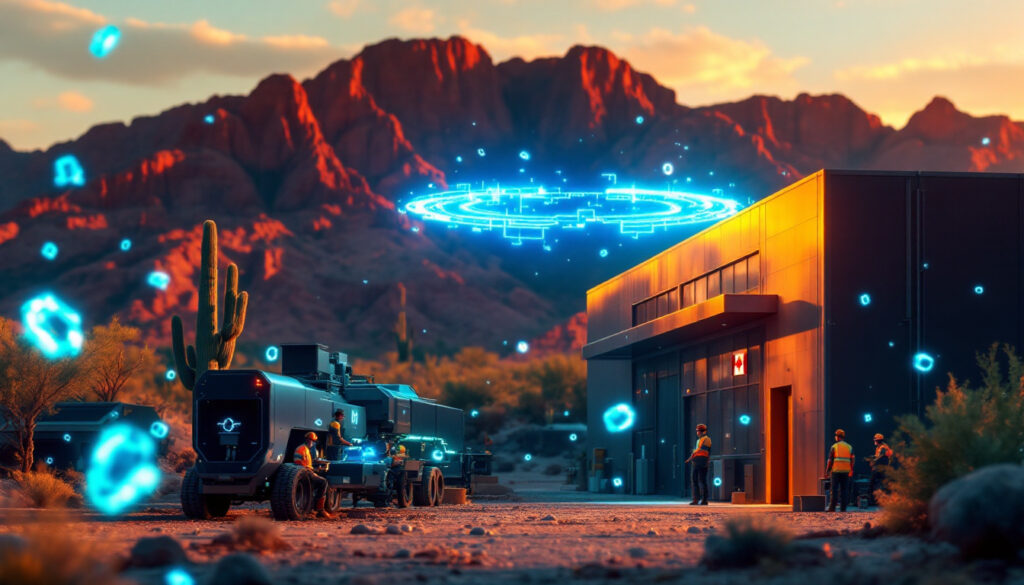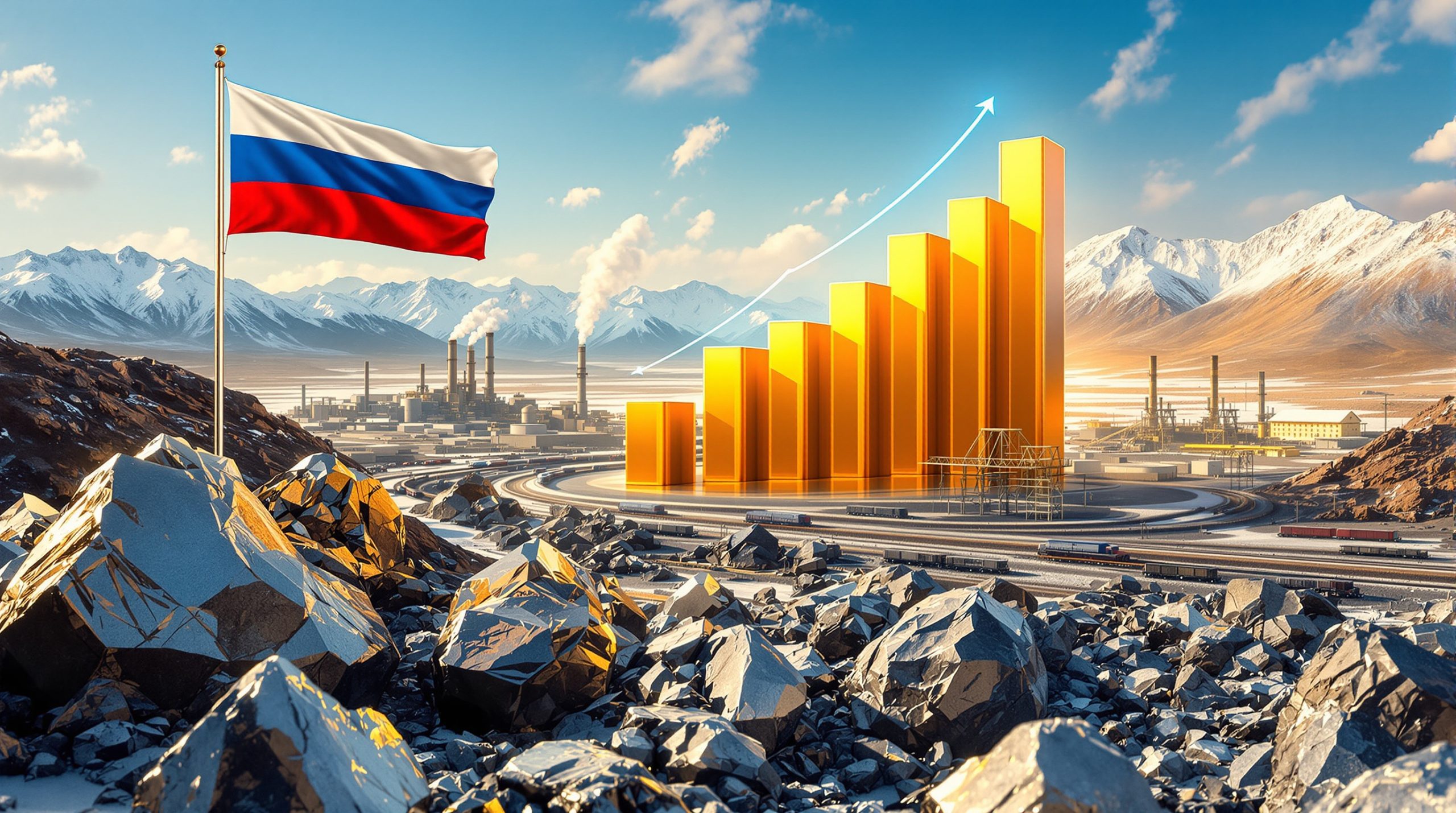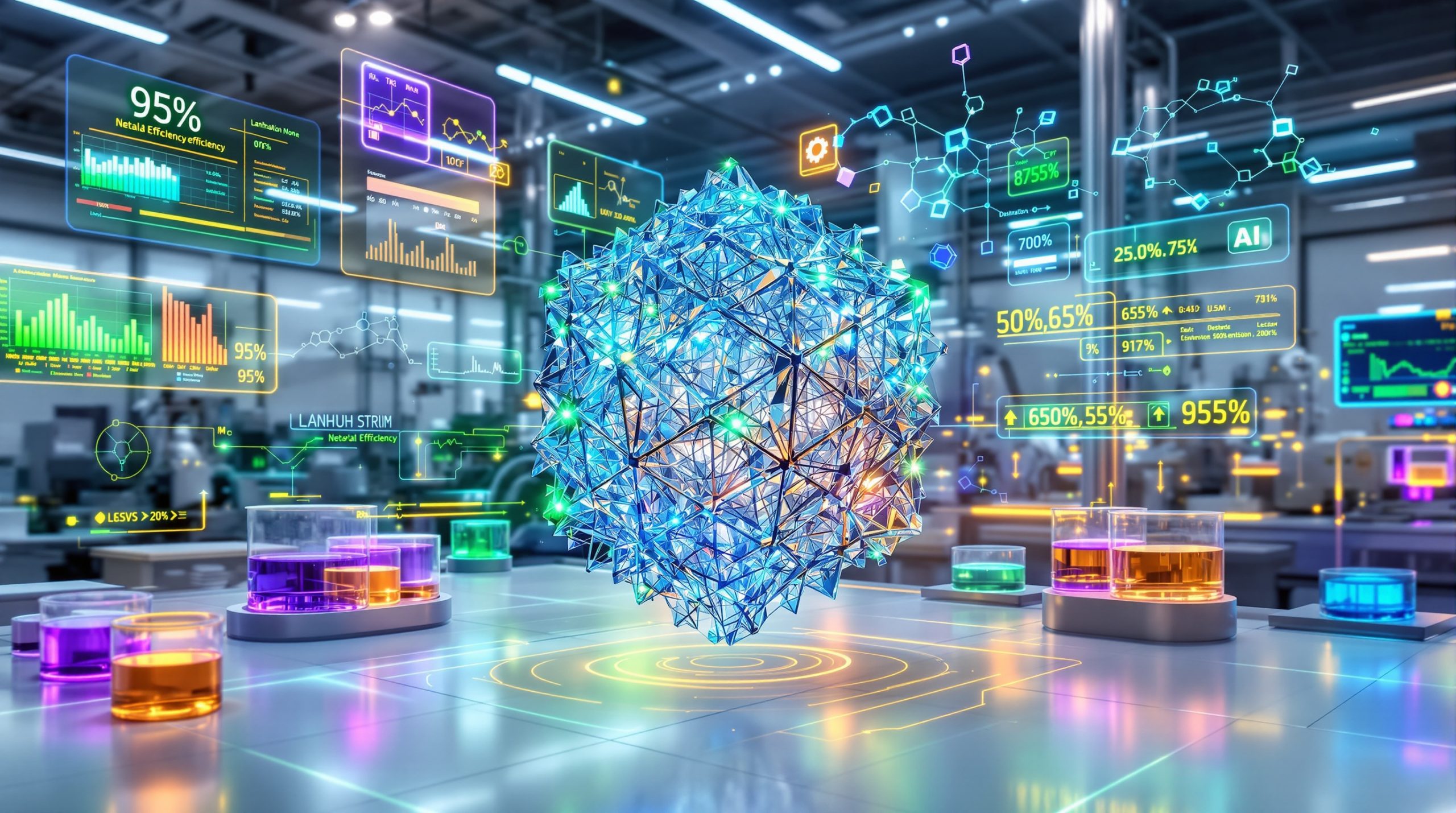What Is Cyclic Materials' New Rare Earth Recycling Project?
In a significant move for critical mineral security, Canadian firm Cyclic Materials has announced a $20 million investment to establish its first commercial rare earth recycling facility in Mesa, Arizona. The strategically located facility will focus on processing end-of-life products to recover valuable rare earth elements using the company's proprietary Mag Cycle technology. With operations scheduled to begin in 2025, this facility represents a major step forward in domestic rare earth processing capabilities.
"This project will significantly reduce U.S. dependence on overseas critical minerals," stated Cyclic Materials CEO Ahmed Garman in the announcement. "By establishing domestic recycling infrastructure, we're addressing vulnerabilities in the rare earth supply chain while creating sustainable jobs."
The facility will primarily target permanent magnets found in electronic devices, electric vehicle components, and wind turbines. These components contain valuable elements like neodymium, dysprosium, and praseodymium—critical mineral shortages that currently see the United States importing approximately 80% from China.
Canadian Investment in U.S. Rare Earth Recycling
The $20 million investment marks Cyclic Materials' first commercial-scale implementation of its recycling technology outside Canada. The company selected Mesa, Arizona, after an extensive site selection process that evaluated factors including proximity to potential feedstock sources, logistics infrastructure, and supportive regulatory environments.
The facility will be designed to process multiple material streams with a focus on consumer electronics and growing volumes of electric vehicle components. By establishing operations in the American Southwest, Cyclic Materials gains access to major transportation corridors and significant urban centers that generate substantial quantities of electronic waste.
"Arizona's relatively low landfill diversion rate of around 18% presents a significant opportunity to capture valuable materials currently being wasted," Garman noted when discussing the location decision. This untapped potential for material recovery factored heavily into the site selection process.
The Mag Cycle Process Technology
At the heart of Cyclic Materials' Mesa facility will be its proprietary Mag Cycle process—a hydrometallurgical extraction technology specifically designed for rare earth magnets. The process achieves recovery rates exceeding 90% purity, significantly higher than conventional recycling methods.
Unlike traditional pyrometallurgical approaches that require intense heat and generate considerable emissions, the Mag Cycle process uses a sophisticated combination of mechanical separation and chemical extraction at lower temperatures. The system begins with precision shredding followed by magnetic separation to isolate rare-earth-containing components.
The facility will incorporate zero-liquid-discharge systems to eliminate wastewater concerns, with an environmental footprint approximately 70% smaller than conventional mining decarbonisation efforts. Independent analyses indicate that recycling rare earths via the Mag Cycle process consumes roughly 10,000 kWh less energy per ton of material than primary extraction methods.
What Will the Mesa Facility's Processing Capacity Be?
The Mesa facility will have an initial processing capacity of 25,000 tons of material annually, with infrastructure designed to accommodate future expansion. Based on current recovery rates, this translates to approximately 375 tons of rare earth oxides per year—enough to supply components for over 250,000 electric vehicles or 500,000 wind turbines.
"We've designed the facility with scalability in mind," explained Garman. "Our initial 25,000-ton capacity establishes commercial viability, but we've incorporated expansion capabilities that could see us processing up to 50,000 tons annually by 2028, depending on market demand."
The facility will operate 24/7 with three shifts, employing sophisticated automation systems to maintain consistent quality and throughput. The company plans a phased commissioning approach, beginning with smaller processing lines to refine operational parameters before reaching full capacity.
Annual Processing Targets
The 25,000-ton annual processing target puts the Mesa facility on par with some of the most advanced recycling operations globally. For comparison, Redwood Materials' Nevada facility processes approximately 40,000 tons of lithium-ion batteries annually, while the EU's CIRCAL project has demonstrated 95% rare earth recovery rates from electric vehicle motors.
Industry analysts project the facility will divert approximately 6% of Arizona's annual electronic waste from landfills in its initial phase, with capacity to increase this figure to 12% upon full implementation. This capacity represents a significant step toward closing the loop in rare earth material lifecycles.
Material Sources and Supply Chain
Cyclic Materials is establishing regional collection networks to ensure consistent feedstock supply. Primary material sources will include:
- End-of-life consumer electronics (computers, smartphones, hard drives)
- Decommissioned wind turbine components
- Electric vehicle motors and batteries
- Industrial equipment containing rare earth magnets
The company is negotiating agreements with major electronics manufacturers, automotive recyclers, and waste management companies to secure reliable material streams. These partnerships will ensure consistent quality and quantity of recyclable materials entering the facility.
How Does This Facility Impact U.S. Critical Mineral Security?
The establishment of Cyclic Materials' Mesa facility addresses a critical vulnerability in U.S. mineral security. With China controlling approximately 80% of global rare earth processing capacity, domestic recycling provides a strategic alternative supply chain for these essential materials.
The Defense Department has identified rare earth elements as crucial for numerous military applications, including F-35 fighter jets (which require approximately 920 pounds of rare earths per unit), missile guidance systems, and communications equipment. By creating a domestic source through recycling, the facility contributes directly to national security objectives.
A 2024 Department of Energy report suggests that domestic recycling operations could potentially meet up to 35% of U.S. rare earth demand by 2030 if facilities like Mesa prove successful and are replicated. The Mesa facility alone could offset approximately 12% of current neodymium imports once operating at full capacity.
Reducing Foreign Mineral Dependency
"The United States has been dangerously dependent on foreign sources for critical minerals," stated Garman. "Our Mesa facility demonstrates that recycling can provide a significant, environmentally superior alternative to imports while creating domestic jobs and infrastructure."
The facility aligns with bipartisan policy efforts to reduce mineral dependence on potentially adversarial nations. Recent years have seen China implementing export quotas on rare earths, including a 30% reduction in 2024, highlighting the vulnerability of supply chains heavily dependent on a single nation.
The U.S. Defense Logistics Agency has responded by stockpiling approximately 1,200 tons of rare earths in 2024 alone, indicating the strategic importance of these materials. Domestic recycling provides an additional buffer against supply disruptions or market manipulation.
Strategic Importance of Rare Earth Elements
Rare earth elements are essential components in technologies critical to national defense, renewable energy generation, and high-technology manufacturing. Despite their name, most rare earths are relatively abundant in the Earth's crust but rarely occur in concentrated, economically viable deposits.
Seventeen elements comprise the rare earth category, with neodymium, praseodymium, dysprosium, and terbium being particularly valuable due to their magnetic properties. These elements enable the creation of powerful permanent magnets that maintain performance at high temperatures—critical for electric motors, wind turbines, and numerous defense applications.
The current concentration of processing capacity in China creates strategic vulnerabilities that domestic recycling helps address. While the United States possesses some mining capacity through operations like MP Materials' Mountain Pass mine (supplying approximately 15% of global rare earths), domestic processing remains limited, with most material sent overseas for refining.
What Environmental Benefits Does Rare Earth Recycling Offer?
The environmental advantages of rare earth recycling are substantial when compared to traditional mining and processing. Primary extraction typically involves extensive open-pit mining, acid leaching, and multiple separation stages that generate significant waste material and water contamination.
According to lifecycle assessments, the Mag Cycle process reduces carbon dioxide emissions by approximately 70% compared to conventional mining operations. For every ton of recycled neodymium-iron-boron magnets, approximately 10,000 kilowatt-hours of energy are conserved compared to primary production methods.
"Recycling rare earths isn't just about supply chain security—it's about fundamentally rethinking how we source these materials," noted a spokesperson from the United Nations Environment Programme, which has documented that e-waste recycling prevents approximately 50 million tons of CO2 emissions annually worldwide.
Sustainability Advantages
The environmental benefits of the Mesa facility include:
- Reduced land disturbance and habitat destruction compared to mining
- Elimination of overburden and tailings associated with extraction
- 95% reduction in process water requirements versus primary production
- 40% reduction in acid usage compared to conventional extraction methods
- Capture of 99.9% of particulate emissions through advanced filtration systems
The facility's closed-loop processing system significantly reduces waste generation. While conventional rare earth mining can produce up to 2,000 tons of waste material per ton of rare earth oxides, the Mag Cycle process generates less than 20 tons of residual material per ton of oxides, most of which can be further processed for other applications.
Circular Economy Implementation
The Mesa facility exemplifies circular economy principles by extending the useful life of critical minerals through multiple product lifecycles. Rather than the traditional linear extract-use-dispose model, recycling creates a closed loop where materials maintain their economic and functional value indefinitely.
The Circular Economy Institute notes that effective recycling can extend rare earth lifespans by 20-30 years, drastically reducing the need for new extraction. This approach is increasingly essential as demand for these materials accelerates with the growth of renewable energy and electric transportation.
For comparison, Apple's Daisy recycling robot can recover approximately 1 ton of cobalt from every 100,000 iPhones processed. Similar efficiencies in rare earth recovery could dramatically reduce the environmental footprint of high-technology manufacturing while conserving finite mineral resources.
What Economic Impact Will the Facility Have on Arizona?
The economic benefits of Cyclic Materials' Mesa facility extend beyond the immediate $20 million investment. The project will create approximately 120 direct jobs—80 in technical positions requiring specialized training and 40 in operational roles. These positions will offer competitive wages, with skilled technical roles averaging around $35 per hour according to industry standards.
Beyond direct employment, the facility is projected to generate approximately $50 million in annual economic activity through supply chain purchases, logistics services, and employee spending. This aligns with broader economic development trends in Mesa, where the technology sector has experienced 14% growth in 2024 according to the Arizona Commerce Authority.
"The rare earth recycling facility represents exactly the kind of advanced manufacturing we want to attract," stated a spokesperson from Arizona's economic development office. "It combines environmental benefits with high-skill job creation while positioning our state as a leader in the circular economy."
Job Creation and Local Economy
The facility will create diverse employment opportunities across multiple skill levels:
- Engineers and metallurgists for process optimization
- Laboratory technicians for quality control
- Equipment operators and maintenance specialists
- Logistics and supply chain managers
- Environmental compliance specialists
- Administrative and support personnel
To develop the necessary workforce, Cyclic Materials has established a partnership with Mesa Community College to train approximately 200 students annually in the specialized skills required for rare earth recycling operations. This initiative will create a sustainable talent pipeline while providing local residents with access to careers in an emerging high-technology sector.
Technology and Innovation Hub Development
The Mesa facility could serve as an anchor for a broader cluster of recycling and materials recovery businesses. Similar technology corridors have emerged around Tesla's Gigafactory in Texas, which created approximately 10,000 jobs with comparable wage structures and attracted numerous suppliers and complementary businesses.
Arizona's renewable materials tax credit program, which provides $2.5 million in incentives for the project, reflects the state's commitment to developing advanced recycling infrastructure. This policy environment creates favorable conditions for additional investments in sustainable resource extraction technologies.
The facility's innovation potential extends beyond its immediate operations. As a commercial-scale demonstration of rare earth recycling technology, it may attract research partnerships with Arizona's universities and generate intellectual property that further strengthens the region's technology sector. Additionally, it represents a significant step in the mining 4.0 revolution by integrating advanced digital technologies with sustainable processing methods.
FAQ About Cyclic Materials' Rare Earth Recycling Facility
What are rare earth elements and why are they important?
Rare earth elements comprise 17 metallic elements on the periodic table, including neodymium, dysprosium, and praseodymium. Despite their name, most are relatively abundant in Earth's crust but rarely occur in concentrated deposits. Their unique magnetic, luminescent, and electrochemical properties make them essential for technologies including permanent magnets, catalysts, and phosphors.
These elements are particularly crucial for clean energy technologies—a typical electric vehicle contains 1-2 kilograms of rare earths, while a single large wind turbine may use up to 600 kilograms. Defense applications also rely heavily on rare earths, from guidance systems to communications equipment and night vision technologies.
The current global supply chain remains heavily concentrated, with China controlling approximately 80% of processing capacity. This concentration creates significant geopolitical and supply security concerns for the United States and other nations dependent on these materials for advanced manufacturing and defense systems.
How does the Mag Cycle process work?
The Mag Cycle process begins with mechanical preprocessing to isolate rare earth-containing components from end-of-life products. For electronics, this involves precision disassembly or shredding followed by magnetic separation to capture rare earth-containing fractions.
The separated material undergoes a proprietary hydrometallurgical process that selectively dissolves rare earth elements while leaving most impurities behind. This leaching stage uses significantly less acid than conventional extraction methods, with approximately 40% reduction in chemical inputs.
The resulting solution undergoes multiple purification steps to remove remaining contaminants before rare earth elements are precipitated as oxides or carbonates with purity exceeding 90%. These compounds can then be directly used in manufacturing new magnets and other components.
The entire process operates as a closed-loop system with continuous monitoring and quality control to ensure consistent output. Environmental safeguards include zero-liquid-discharge water management, advanced air filtration systems, and comprehensive waste minimization protocols.
When will the Mesa facility be fully operational?
Construction of the Mesa facility is scheduled to begin in mid-2024 with a phased commissioning approach starting in early 2025. Initial operations will focus on processing consumer electronics while the company establishes supply chains for automotive and renewable energy components.
The facility is expected to reach 50% of its designed capacity by Q3 2025 and full operational capability by Q1 2026. This gradual scaling allows for optimization of processing parameters and thorough training of the workforce before maximum throughput is achieved.
The company has secured all major regulatory approvals, including air quality permits, hazardous materials handling certifications, and zoning clearances. Final permitting for specific operational aspects remains ongoing but is expected to be completed before construction begins.
Cyclic Materials has indicated that future expansion beyond the initial 25,000-ton capacity would be considered based on market conditions and feedstock availability, with potential to double processing capacity to 50,000 tons annually by 2028 if demand warrants. Furthermore, the company is exploring how its approach might contribute to broader ESG in mining initiatives across the sector.
Ready to Capitalise on the Next Major Mineral Discovery?
Discovery Alert's proprietary Discovery IQ model analyses ASX announcements in real-time, delivering instant alerts on significant mineral discoveries before the broader market reacts. Explore how historical discoveries have generated substantial returns by visiting our dedicated discoveries page and begin your 30-day free trial today.




